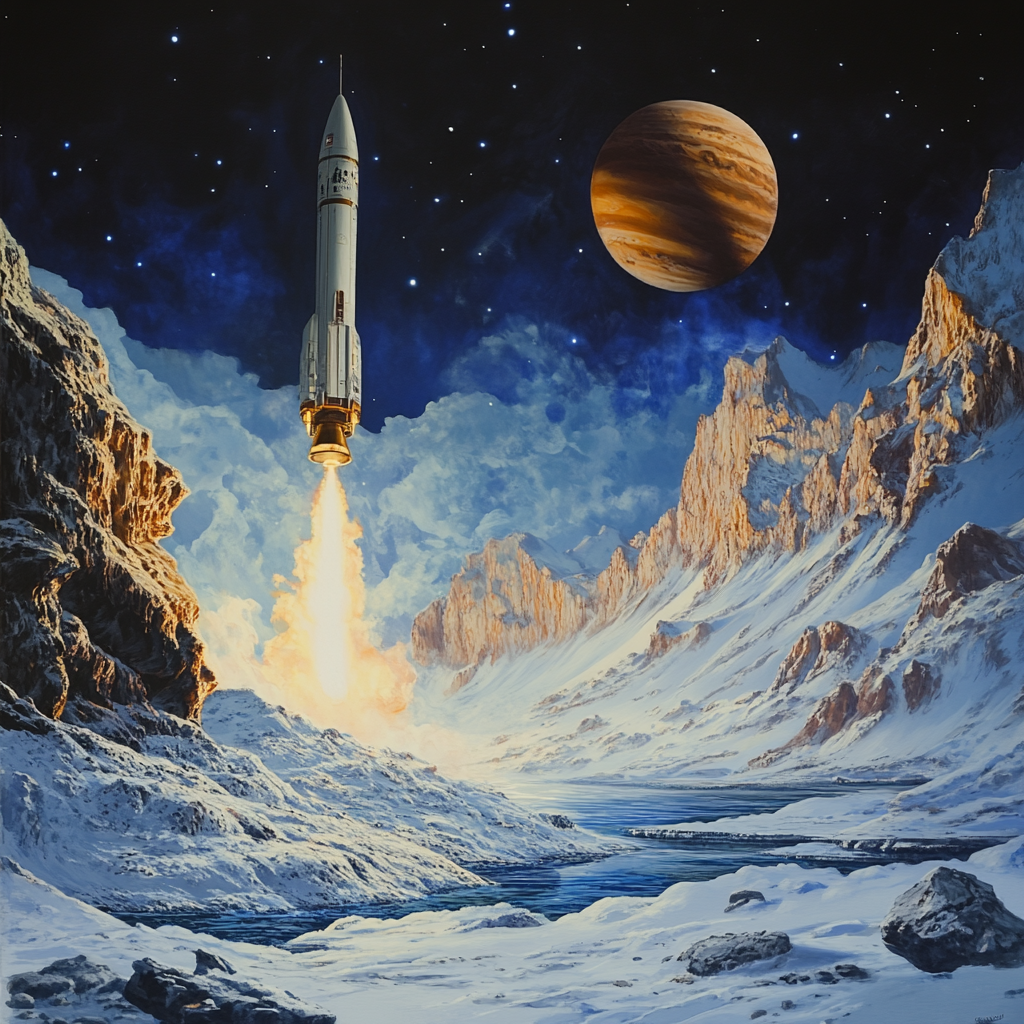
Hurricane Impact Postpones Europa Clipper Launch to October 14
NASA's Europa Clipper Mission: A Journey to Jupiter's Icy Moon
When it comes to celestial escapades, the cosmos often serves up something extraordinary, and NASA's Europa Clipper mission is no exception. Set to break stereotypes about ice-cold moons and their potential for harboring life, this mission is an exciting chapter in our never-ending quest for answers among the stars. Let’s dive into this cosmic coffee pot and brew a solid narrative on what this mission entails.
On October 14, 2024, the world buzzed with anticipation as NASA and SpaceX teamed up once more to launch the Europa Clipper spacecraft from Launch Complex 39A at the Kennedy Space Center. The launch, originally on the books for October 13, slipped due to Hurricane Milton's tantrum and an unspecified technical hiccup that needed patching up in pre-launch checks. It's a bit like getting stuck in traffic while your coffee spills all over your lap just before hitting the road; no one’s happy, but safety must come first.
SpaceX, ever the vigilant maestro, undertook what they affectionately call a "paranoia scrub." This isn't just a fancy term for being cautious—oh no! It illustrates the frenzied yet focused dance of engineers meticulously reviewing rocket systems. Turns out, they spotted a quality control issue with some tubing, prompting a delightful round of checks and measures to ensure all systems were go for launch. It’s a bit reassuring to know that behind the sleek exterior of a rocket lies a battalion of engineers wearing helmets, scrutinizing every screw and rivet.
Now let’s talk about the star of the show—the Europa Clipper itself. With aspirations grander than a teenager's dreams of rock stardom, this spacecraft is practically bursting with ambition. It’s designed to unlock the secrets of Europa, one of Jupiter’s icy moons believed to host a vast subsurface ocean. Picture this: Europa is roughly the size of Earth’s moon but is estimated to possess more than twice the quantity of water than all of Earth's oceans combined. That’s no small splash in the cosmic bucket! One might wonder why this icy moon is such a hot topic in astrobiology. The mission's aim isn’t just to flirt with Europa’s stunning surface; it’s about determining if this ice-encased wonderland has all the right ingredients necessary to stir the concoction of life.
As our brave little spacecraft embarks on its ambitious journey, let’s not sugarcoat it; this trip to Jupiter is anything but a stroll in the park. After lifting off on a Falcon Heavy rocket, the Europa Clipper is set to go on an odyssey that will have it dodging cosmic debris while following a strategic Earth-escape trajectory, gallivanting past Mars in March 2025. The plan includes a gravity assist tactic from the Red Planet to give the Clipper a good ol’ speed boost. But the playbook doesn't stop there; the spacecraft will harness yet another gravity assist from our home planet in December 2026, eagerly propelling itself toward the larger-than-life Jovian system with a scheduled rendezvous for April 11, 2030. It’s like what your coffee maker does, but on a galactic scale—percolating its way through the cosmos!
What really makes the Europa Clipper a wizard of exploration is its arsenal of nine specialized instruments and even a gravity and radio science experiment. These tools are akin to an enthusiastic chef’s kitchen gadgets, all ready to dissect Europa’s surface composition, geology, and that tantalizing internal ocean. They’ll even be searching for plumes of water vapor that may be escaping from beneath Europa’s icy shroud. Imagine a future filled with data collecting from 49 flybys—some of which will take the spacecraft down to a jaw-dropping altitude of just 16 miles above the surface. We'll be almost close enough to hear the sizzle of Europa's icy crust cracking!
But it’s not all smooth sailing; the magnetic winds of Jupiter’s formidable environment present a significant challenge. The planet’s immense magnetic field is the sort of thing that could scare cosmic explorers back to bed. As if it were a colossal particle accelerator, the radiation swirling around Jupiter can morph normal electronic components into fragile specters of their former selves. Hence, the ingenious folks behind the Clipper decided to armor up! They’ve designed the craft to withstand radiation hellfire, but along the way, they discovered that some essential electrical pieces would need a little extra TLC. Instead of going down the delay-rabbit hole for replacements, they ingeniously opted to fine-tune the mission profile to keep things moving. Clever strategizing, if I do say so myself.
So why is this mission so monumental? Well, folks, the price tag is as eye-popping as a shooting star on New Year's Eve—$5.2 billion! But let’s be real here. Mission costs aside, this operation is a stepping stone towards understanding life beyond our blue planet. Think about the future ramifications: explorers of the universe could unlock the nasty secrets of habitability, charting new paths to extraterrestrial contacts, and potentially uncovering realms that offer sustenance for life as we know it. As NASA Administrator Bill Nelson poetically declared, “By exploring the unknown, Europa Clipper will help us better understand whether there is the potential for life not just within our solar system, but among the billions of moons and planets beyond our Sun.” Isn’t that enough to make your heart do a little cosmic jig?
The successful launch of the Europa Clipper doesn’t simply herald a six-year voyage; it signifies hope, curiosity, and the relentless pursuit of knowledge. It’s the kind of mission that jazzes up nerds like us, making the space-themed coffee cups worth every penny. As the space probe gallops towards Jupiter, scientists, engineers, and curious minds alike are on the edge of their seats. What remarkable tales and breathtaking data will it uncover? Will it be the harbinger of new beginnings, paving the way for future expeditions—perhaps a daring lander aimed at digging through the ice, hoping to discover the signs of life hiding beneath Europa’s icy façade?
Exciting times are ahead, dear space enthusiasts! If you want to keep your fingers on the pulsating heart of space explorations, and stay updated on the latest escapades and discoveries from the cosmos, why not join our cosmic community? Subscribe to our Telegram channel: @channel_neirotoken and let’s rocket through the universe together!

